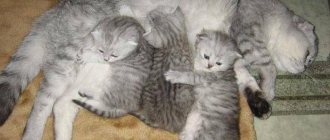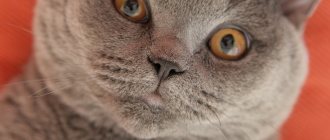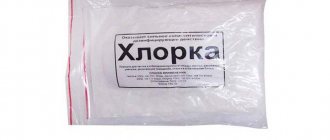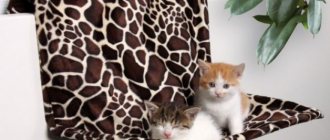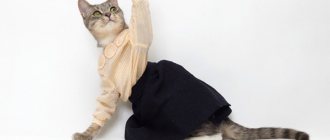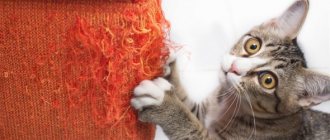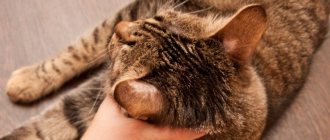Cats are probably the most ancient animals that began to live together with humans, except that dogs can compete with them for the prize. People sheltered them, fed them, let them near the fire in the cold season, and grateful cats destroyed rodents and scared away small birds. As soon as the cats moved into city apartments, they no longer needed to hunt mice and rats, but their owners had a new concern - where would their pets go to the toilet? First, homemade, and then factory-made trays for tailed pets became a real salvation. This thing is a must have in a house where there is a cat; They buy a tray as soon as a kitten appears in the family, and they immediately begin to accustom the animal to it.
It just seems that choosing a tray is a simple task. One animal is happy to go to a simple, inexpensive one, but “turns up its nose” at the latest model. For another cat, be sure to serve it with a lid and ultra-modern filler. Which tray is better, and how to choose it correctly, and is it even needed?
DIY wooden cat tray
The mesh toilet is very easy to use. It can be used with or without filler. To use a litter box with a cat grid, follow these steps:
- the container is installed in a secluded place, but so that the animal has round-the-clock access to it (for example, under the bathroom);
- filler or simple sawdust is poured into the tray tray so that it covers the bottom (if liquid gets on them, the granules swell greatly, so you should not overdo it with the quantity);
- A mesh is placed on top of the tray and the toilet is ready for use.
Making a plastic “toilet” for a cat is not at all difficult and does not take long. Some complicated tools won't be useful either. So, to make a “latrine” for a catfish, you will need:
- Plastic container (bath, construction basin).
- Marker, masking tape.
- Hacksaw. It can be replaced with a jigsaw or grinder.
- Coarse sandpaper or file.
- Acrylic paint.
The algorithm is as follows:
- Take a suitable plastic container.
- Mark the cut location with a marker or tape. You choose the height of the sides yourself, depending on the age, size and individual characteristics of your pet predator.
- Cut off all excess using a jigsaw, hacksaw or grinder. It is not advisable to use scissors for this purpose, as the material may crack.
- Clean the cut areas with sandpaper or a file.
- If desired, paint the container with acrylic paint (preferably from a spray can).
As already mentioned, this is a temporary option. You can use a box made of plywood or boards as a “bathroom” for the mustachioed tabby.
So, you will need:
- Boards or plywood sheets.
- File, jigsaw.
- Screwdriver.
- Screws or self-tapping screws.
- Metal corners.
- Thick waterproof film.
The procedure is as follows:
- Make a sketch or drawing of the future product, taking into account the dimensions and configuration. It can be a rectangle or a triangular structure (for placement in a corner).
- Cut out 3 or 4 (depending on the configuration) sides for the future tray. Fasten them together using screws or self-tapping screws.
- Cut out the bottom and attach it to the frame using corners.
- Cover the bottom of the product with film and fill it with filler.
The toilet is ready!
House
Try to take the words “cat house” literally and make separate apartments for your pet. It could be a minimalist plywood house, stylized as a country house, or a luxurious mansion - an exact copy of some castle. Huge scope for imagination!
The advantage of such “apartments” is their aesthetic appearance. The house can be decorated with various decorative elements, such as flowers in pots. Remember: the items chosen for the design must be safe for the pet.
Photo: picclick.com
House "Zoogurman Empire" for dogs and cats
RUB 1,550
Buy
Requirements
Before you start working, you need to know which design is preferable. It is important to decide on the size, since the tray should be comfortable for the animal. Otherwise, it will simply do its business where it is more convenient. The pet should be able to take a comfortable position, therefore:
- The best option is a flat, oblong-shaped device.
- If your cat is shy by nature and prefers to cope with large and small needs, an enclosed “house” would be a good solution.
- The depth of the future “toilet” should be no less than 50, but no more than 70-80 mm. If the tray is too shallow, then the filler, swelling, will spill out through the sides.
READ Why does a cat lose hair in clumps and have sores on the skin: causes, treatment, prevention
As for the material of manufacture, then:
- It is advisable that your DIY cat tray be made of plastic. This is a durable, affordable, and, most importantly, extremely easy-to-care material. It is extremely easy to wash and clean.
- In principle, metal is also a suitable option, but it quickly oxidizes, reacting with the animal’s urine.
- Wood is only suitable for temporary use, as it quickly swells, absorbs moisture, and a constant aroma reigns in the apartment, which is quite difficult to get rid of. For the same reason, a cardboard box for a cat’s “latrine” is not the best option.
Miniature furniture
Do you like to take cute photos of your animals? Then you will appreciate this option. If your pets love to walk on the bed, in particular on the pillow, in the morning, then it will not be difficult for your cat to get used to his own small bed. You can also choose a sofa from miniature furniture. To make such furniture more interesting, purchase a small bedspread and cute pillows that will match the style of your bed linen. You will have a cute arrangement in the room.
Photo: etsy.com
Bed for dogs/cats Darell “Domino”
694 rub.
Buy
Pros and cons of using
This tray, like any other thing, has its advantages and disadvantages. Main advantages:
- This toilet model is inexpensive, and in addition, the owner will be able to save on filler.
- Since the filler is completely hidden in the tray, the cat will not be able to reach it and taste it.
- Compared to conventional plastic toilets, this tray option is more hygienic. After all, thanks to the grate, the pet does not come into contact with dirty litter and does not spread it throughout the house on its paws.
- Variety of colors. A person can choose just such a cat litter box with a grate that would fit into the interior of the apartment.
Main disadvantages:
- Daily washing. The grate of the litter box will have to be washed every time your pet uses the restroom. Otherwise, it will get dirty with the products of its vital activity, and an unpleasant smell will hang in the apartment.
- A cat litter box with a grid is suitable only for those owners who spend their time mainly in the house. If you do not wash the mesh in time, the animal may refuse to relieve itself again in a dirty tray, and this is fraught with “surprises” in the most unexpected places.
- Smell. If you do not use fillers, then such an open tray will invariably emit not the most pleasant odors.
The last disadvantage can be easily avoided. You just need to add wood filler to the tray; it absorbs moisture and retains odors.
Knitted basket
The simplest and most minimalistic option. You can put such a house anywhere, and making it yourself is as easy as shelling pears (there are many video tutorials on the Internet that will show you how to easily make a basket). A voluminous knitted bed will add coziness to the interior. Just choose the right color and spend a couple of hours making it.
Photo: ebay.it
Animal bed "Cascade"
RUB 5,515
Buy
How to change the filler correctly?
If there is no opportunity for regular washing, then to avoid odors it is worth using cat litter. In the pet store they are presented in a wide range of different materials:
- Silica gel absorbs liquid better than other granules and absorbs odors. It is made from dry silicate gel, so it is toxic. It is not recommended to use it in apartments where small kittens live. They can taste it, and in addition, the silica gel granules begin to fizz when they get wet. This may frighten your pet.
- Wood filler is also effective in controlling odors. Absorbing liquid, its granules increase in size by 2-3 times. Therefore, you need to pour it in small quantities, which allows you to save a lot.
- Mixed clay and sawdust filler. Despite the fact that it copes well with the task, it also has disadvantages. It is also not suitable for kittens, as they may swallow it. And when they react with liquid, the granules become wet and can stick to the pet’s fur.
- Regular sawdust. Sawdust blocks odor quite well, but is significantly inferior in this regard to wood filler.
- Sand. River sand only absorbs moisture, but does not eliminate the odor at all, so you have to change the filler often.
READ What diseases can you get from a cat?
Of the options listed, the most versatile would be wood filler. It can be used for kittens and adults, for healthy animals and animals prone to allergies. But if several individuals live in the house, then the best way to deal with the smell is silica gel.
Cats rarely do anything out of spite, so if the owner finds a puddle in the wrong place, he should not scold the cat. You just need to change the filler and monitor your pet’s reaction.
The frequency of changing the filler depends on its type. For example, wood pellets that have been exposed to urine will scatter at the bottom of the tray. They are separated with a spatula from the surviving granules and thrown away. If there are no whole ones left, then remove all sawdust from the tray and wash it well under running water.
You can use cat litter, such as silica gel, for two weeks and only then change it completely. But it is better to remove already used lumps immediately. And the contents of the tray need to be stirred periodically for quick drying.
The mixed filler is also changed once a week. To do this, you need to use a special spatula with holes through which the used filler will be sifted from the clean one. After this procedure, fresh granules are added to the container.
In addition, wet cleaning will be required around the tray, as grains of sand may spill outside of it. Each owner can decide for himself how much filler to add by observing the animal.
Required amount of filler per cat:
- wood filler - 1 layer;
- silica gel - 2 cm in height;
- mixed - 3 cm;
- sand - 1 cm.
All types of fillers have different granule sizes. This is convenient because you can buy small stones for kittens, in which they will rummage with interest, and this will help them quickly get used to the toilet.
READ Siamese cat - description of the breed and character photo...
Ball of thread
Another modern and versatile house shape for your furbaby. These fidgets love to play with threads so much that a house stylized as a ball will become their favorite place to relax.
Photo: tuftandpaw.com
Wicker basket house for animals
3,000 rub.
Buy
How to train a cat to use a litter box?
When a tray and filler have been chosen, the main question arises - how to train the cat to do its business in exactly the right place. You can teach this to a cat of any age, but it is easier to do this when there is a kitten in the house.
After this, the kitten can be periodically brought into the tray and made digging movements with its paws. If during the day the owner notices that the pet has begun to rush about and behave restlessly, he should also take the animal to the tray. When a cat successfully goes to the toilet in the litter box, he must be encouraged.
It will be a little more difficult to train an adult, as it already has its own character and habits. They are shown the toilet according to the same principle as kittens. If the cat has chosen a toilet in another place, you can pick up her excrement with a scoop and transfer it to the tray. If this does not help, you can try to place the tray where the cat did its business and gradually move it to its original place, about 5 cm per day.
If your pet refuses to go to the designated place, you should not yell at him or scold him too much. Ultimately, your efforts will bear fruit.
Felt house
Do you know the feeling when you want to wrap yourself in a blanket with a mug of warm tea and sit like that for an eternity? Cats are not far behind us in this regard. Of course, they don’t drink tea, but they really value warmth, coziness and comfort.
The advantage of such a house is that wool perfectly retains and releases heat, so it will be comfortable at any time of the year.
Photo: tuftandpaw.com
House for a cat made of felt “Cat House”
RUB 2,188
Buy
Types of cat beds
Cat beds are available in a wide variety of designs - houses, baskets, transformers, heated models, hammock-shaped, cave-shaped, etc. Let's take a closer look at the types of beds for domestic cats and cats.
House
The most common type is the house bed, which is often closed and visually resembles a small booth where the animal can retire and rest peacefully.
Advantages of a lounger-house:
- soft and comfortable for cats;
- It’s warm inside, drafts are avoided;
- does not take up much space;
- allows the cat to control the territory and feel protected.
Basket
Baskets-loungers have an open top. Visually they resemble a mattress with sides. The design is soft and comfortable for the cat. There is filling inside.
Cons of the basket: regular maintenance is required, which is due to the open top, which allows dust and other contaminants to pass through.
Bed bag
A bean bag is a simple design in the form of a sleeping bag with a tight rim at the entrance. The cat can comfortably stay in this warm “nest”, which is especially important in the cold season. The assortment includes bean bags of different sizes, shapes and colors.
The main advantage of such a lounger is that it does not take up much space and is easy to carry.
Transformable bed
A transforming bed combines several functions at once: a reliable shelter, a place to rest and sleep. The product is formed in the form of a mattress pad, sofa, basket or bed with a closed top. A very convenient and profitable option for creating a cozy home for your pet.
Wicker beds
Some models of loungers are created using the weaving method from wicker. They look very beautiful and fit harmoniously into Provence style interiors. But this design has disadvantages: difficult care of the product and the likelihood that the animal will periodically gnaw on the bars of the bed, which will affect its appearance.
Hanging loungers on the wall
If there is no free space on the floor to place a cat bed, pay attention to universal wall-mounted models with a special wall mount. Such structures can be placed at any distance from the floor. Pros of hanging beds: cats love to be at a height and watch everything that happens in the house. This bed will become your pet's favorite place.
Bed for battery
If your cat often spends time near the radiator, purchase a comfortable bed with an attachment to the heating device. They do not take up extra space in the house, have a cute design and soft texture. This model is especially recommended for cats with short hair and often freezing in the winter season.
Window bed with suction cups
Does your cat like to sit on the windowsill and watch what is happening on the street from the window? Pay attention to the lounger with suction cups, which can be attached to a window. Such models have a soft and comfortable mattress and are characterized by versatility and mobility. Caring for this type of bed is quite simple.
Scratching posts
To prevent your pet from causing damage to the wallpaper and your favorite sofa, you should take care of purchasing or making your own scratching post. By scratching it, cats get rid of the keratinized layers on their claws, and also leave a special mark on it, which lets them know that the object is safe.
Scratching posts come in various sizes and shapes. Some are installed on the floor in the form of posts, others are attached to the wall. The choice depends on the pet's preferences. The main thing is that the structure must be stable.
To make it easier to train your cat to sharpen its claws in a designated area, you can reward it with a treat each time. A pet may refuse to use a scratching post if, for example, he does not like its shape or material. In this case, the owner will have to experiment to find a suitable option.
Fish house
This is the case when it was not the cat who ate the fish for lunch, but the fish that ate the cat. Of course, in a figurative sense. An option for owners who are not afraid to experiment with the appearance of the house and at the same time value the comfort of their pet. This composition can be played up by placing a lounger with a marine theme inside the house. So your cat will turn into the captain of the ship.
Photo: tuftandpaw.com
House "Owl"
RUB 2,575
Buy
